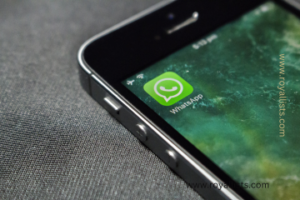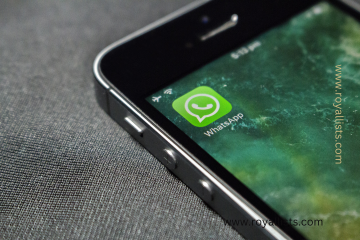How Digital Forensics Experts Access Encrypted WhatsApp Messages? Social media platforms such as WhastsApp are rather problematic for investigators because the application uses powerful encryption to users’ messages. But its common knowledge that digital forensics professionals have had to work ways to extract such encrypted messages throughout the investigation process, albeit without variation in contents.
End-to-End Encryption: A Double-Edged Sword
It is important to note that through end-to-end encrypted technologies once messages are exchanged between two people, even WhatsApp cannot decipher it or read the contents. This encryption process starts right from the time a message is sent out making it into very complex code the moment it is out of the sender’s device. Once received at the recipient’s handset it is decrypted with a master key stored on the handset. This is good for the privacy of the users but causes issues to the police or forensic when investigating matters.
Working Model of Methods Applied by Forensic Scientists

Physical Device Extraction: Subpoenas to the tech giant yield no result, and one of the best ways forensic specialists can get the WhatsApp data is by taking it from the device at hand. This is possible using forensic instruments that take a copy of the whole device, the encrypted database, where WhatsApp messages are stored. After the database is extracted, the question arises how to get the encryption key.
Crypt Key Recovery: These databases are decrypted by WhatsApp by storing a cryptographic key on the user’s device. Regarding this, experts may try to recover this key through methods other than encryptions since the latter cannot be used to get round this least. In rooted android devices the key can be obtained from the file path and this is very challenging in non rooted devices. Another method may be used to retrieve a lost or deleted key from the device or from an SD card.
Cloud Extraction: If forensic experts cannot gain access to the device then they can try to seek backups from the cloud storage. The messages stored on WhatsApp are saved on the Google Drive or iCloud, and like any other data, those backups are also encrypted. Most of these cloud backups are encrypted, although, with Oxygen Forensic Detective, one can decrypt these backups if the investigator has the token or the correct means of authentication.
Token-Based Access: Currently, if the investigators can obtain an authentication token from the device, then, they will be able to log into the target user’s WhatsApp account remotely, thereby avoiding direct necessity of the cryptographic key to access the backups. The token is usually saved in such backup files and with the help of proper forensic tools this token can be recovered and later used in order to decrypt the database of the application on the cloud which is WhatsApp.
Brute Force and Reverse Engineering: While not very common due to the effort involved, the two main mechanisms of breaking over the communication are the brute force attacks or by reversing the encryption algorithm which is also expensive. For instance, forensic specialists could apply cloud computing to conduct a number of computations testing all possible keys and, therefore, decipher the messages. Although this method yields accurate results, it is usually time and resource consuming making it unfit for practical applications.
Legal and Ethical Issues
Reaching out to the contents of such messages is very legal ad ethical concerns. Even though these approaches might be of great use for the resolution of certain crimes or investigation, they have to be complied with legal strictures regarding protection of the user rights and freedoms. These techniques should be outside the regular working of forensic science only by specialist personnel who are under legal warrant to do so to avoid violating necessary privacy policies.
Also Read: Beyond Text: In what way is Multimodal AI Revolutionizing it?
Conclusion
Although WhatsApp uses encryption, it becomes even more demanding for the extraction team nonetheless, there are ways to getting into encrypted messages such as through physical device extraction, crypt key, and cloud backups. The procedure is quite elaborate, which may warrant the application of tools that are unlawful in most jurisdiction across the world. These methods reflect the concern for user privacy as well as officers’ requirements in the modern world.

